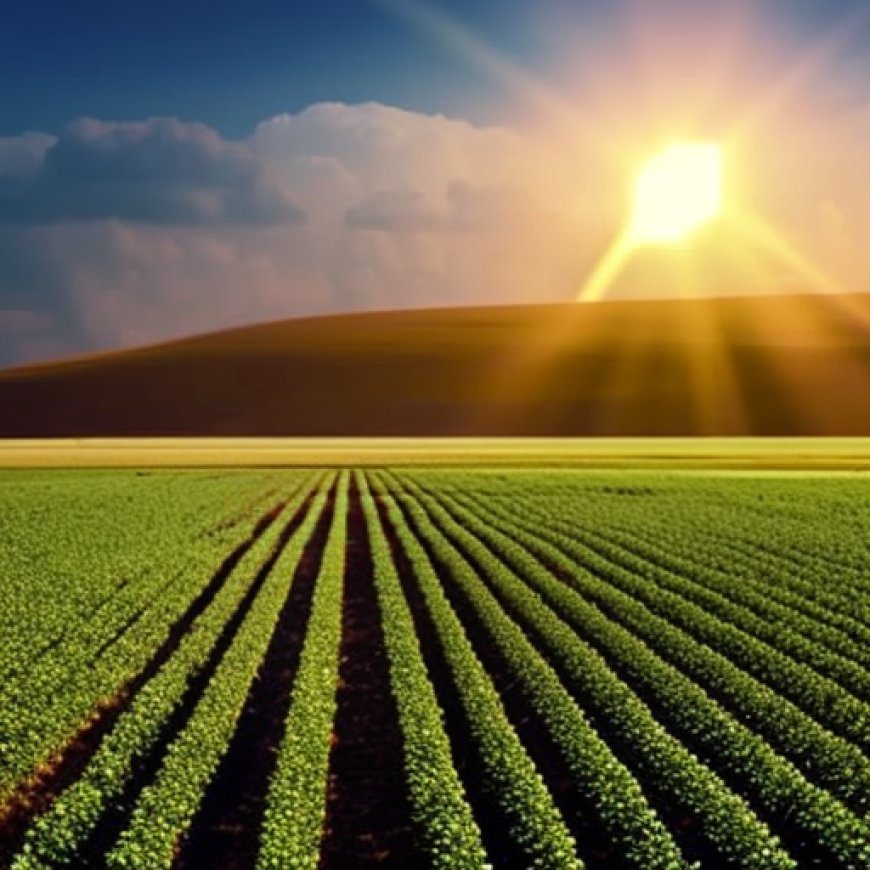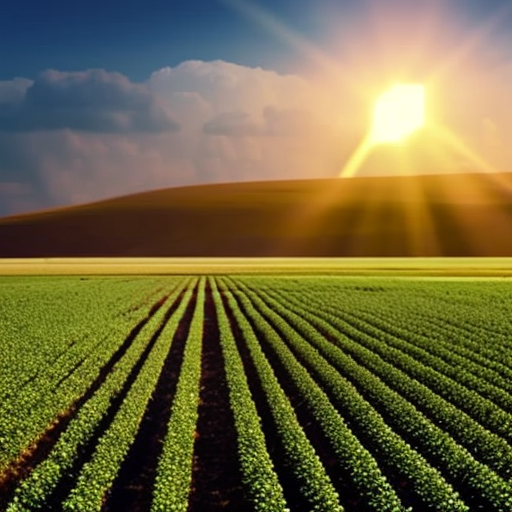Impact of CAP Beyond the EU – A Closer Look on Soya Imports and Milk Product Exports | Agricultural and Rural Convention
Impact of CAP Beyond the EU – A Closer Look on Soya Imports and ... ARC2020


Introduction
The Common Agricultural Policy (CAP) is a policy of the European Union that mainly focuses on agriculture and the food system in each Member State. However, the CAP also has a decisive influence on the European Union’s external trade (imports and exports). It therefore has an impact on agriculture and farming in the countries with which it trades.
The impact of the CAP on peasant farming in developing countries is mostly indirect: the CAP largely influences the European agricultural and food system, which in turn often has a negative impact on peasant farming in developing countries.
Moreover, the CAP is not the only policy in the equation. Other policies implemented by the European Union or its Member States also have external impacts, in particular trade, energy, environmental, food, transport, competition law and cooperation policies. In reality, it is the combination of the CAP and other European and national policies that determines the development of the European agricultural and food system and has a negative impact on farmers in the South.
European imports of South American soya
Every year, the EU imports almost 40 million tonnes of soya (soya meal equivalent), either in the form of grain or meal. These imports, intended for animal feed, mainly provide a protein supplement to the feed ration. The maize-soya combination has formed the basis for the development of intensive livestock farming in Europe, both for cattle, where maize is consumed in the form of silage, and for pigs and poultry, where maize is consumed in the form of grain.
Between the 1960s and the end of the 2000s, European imports of soya increased thirteen-fold. After peaking in 2007, these imports have fallen back slightly due to the slower growth in livestock farming (lower meat consumption) and increased consumption of rapeseed meal, which is replacing soya. European soya imports come mainly from South America. In the various countries concerned (mainly Brazil, but also Argentina, Paraguay, Uruguay and Bolivia), the expansion of soya monocultures, mainly GMOs, has been meteoric since the 1990s.
Today, global demand for soya and the expansion of its cultivation in South America are mainly driven by China and other emerging countries. The European Union’s relative share of world imports is much smaller than it was twenty years ago, but remains significant (around 20%).
The expansion of soya cultivation in South America is largely responsible for the continent’s massive deforestation (Amazonia, Brazilian Cerrado, etc.), the loss of biodiversity, environmental contamination and the poisoning of populations through the intensive use of pesticides. Massive deforestation is also a key cause of global climate change.
The impacts of the soya model are far from being confined to farmers, but the peasant populations of the countries concerned are the main victims. They are also tending to be expropriated from their land and their livelihoods for the benefit of agribusiness firms.
Admittedly, in certain regions of Brazil and Argentina, soya cultivation has also developed within family farming, which has benefited from a genuine economic dynamism. However, these benefits are fragile, as farmers have lost all autonomy, health problems linked to the growing use of pesticides are constantly on the increase. In some regions, specialization in soya has weakened the least competitive peasant farms, which end up having to give up their land to large farms.
The role of CAP
The decision to direct most of the CAP budget towards decoupled direct payments (independent of the type of crop) on the basis of surface area, subject to very few environmental requirements, has stimulated input-intensive agricultural production (fertilizers, pesticides, irrigation water) of high-energy concentrated fodder (cereals, silage maize) and reduced their cost price.
The availability of low-cost soya – due to productivity conditions in producer countries and the absence of customs duties – has encouraged the use of these energy fodders. Soya, which is very rich in protein, combines perfectly with energy-rich concentrated feeds. This development has therefore been to the detriment of grassland systems which based on the use of fodder that is less concentrated in energy and protein.
The rare coupled aids – designed and calculated according to specific objectives – and the various aids under the second pillar of the CAP (the part of the CAP devoted to rural development) are insufficient to significantly offset the decoupled aids under the first pillar and enable the EU to massively substitute South American soya with locally-sourced plant proteins.
It should be pointed out that coupled payments can apply to the production of plant proteins and thus stimulate EU production. Over the last three years, plant protein coupled aid has been used by 19 Member States, accounting for 1.3% of total direct aid for all Member States (i.e. €473 million).
Overall, the new CAP maintains the existing system of coupled aid, with a ceiling of 13% of direct aid under the first pillar for all coupled aid, plus 2% if a Member State decides to increase the amount earmarked specifically for plant proteins. In the end, for the 2023-2027 programming, 7% of the CAP budget has been allocated to coupled payments, amongst which only 14% is dedicated to protein crops.
The amount allocated by the Member States to plant proteins therefore remains relatively low if you compare it to the 70% of coupled payment budget allocated to livestock support. Moreover, when comparing this CAP programming with the previous one, it is clear that the overall distribution of budget remains largely unchanged.
Milk and Milk-Derived Product Exports in Africa
The European Union exports various agricultural raw materials (cereals, dairy products, etc.) at low prices, particularly to countries in the South where these products compete with products from local agriculture. This is particularly true of exports of milk powder to the West African region and, even more so, of exports of fat-filled milk powders (FFMP).
Against a backdrop of strong demand for butter on the world market, more and more players in the dairy industry are tending to skim milk and replace animal fat most often with palm oil fat, the price of which is six to ten times lower than that of butter. After dehydration, the resulting milkfat powder is sold in developing countries at an average price 30% lower than whole milk powder.
While there were relatively few imports of FFMP some fifteen years ago, West African imports have recently soared to the point where they now account for the vast majority of the volumes of dairy powders imported by the region.
West African imports of milk and milk-derived products help to make up for the shortfall in regional production (which only covers around 40% of consumption) and, since the development of milk powders, to lower the cost to consumers.
The problem is that, because of this low price, dairy processors have a strong interest in importing powder and processing it into liquid milk or
SDGs, Targets, and Indicators in the Article
1. Which SDGs are addressed or connected to the issues highlighted in the article?
- SDG 2: Zero Hunger
- SDG 8: Decent Work and Economic Growth
- SDG 12: Responsible Consumption and Production
- SDG 13: Climate Action
- SDG 15: Life on Land
2. What specific targets under those SDGs can be identified based on the article’s content?
- Target 2.3: By 2030, double the agricultural productivity and incomes of small-scale food producers, in particular women, indigenous peoples, family farmers, pastoralists, and fishers.
- Target 8.3: Promote development-oriented policies that support productive activities, decent job creation, entrepreneurship, creativity, and innovation, and encourage the formalization and growth of micro-, small-, and medium-sized enterprises.
- Target 12.2: By 2030, achieve the sustainable management and efficient use of natural resources.
- Target 13.2: Integrate climate change measures into national policies, strategies, and planning.
- Target 15.1: By 2020, ensure the conservation, restoration, and sustainable use of terrestrial and inland freshwater ecosystems and their services.
3. Are there any indicators mentioned or implied in the article that can be used to measure progress towards the identified targets?
- Indicator for Target 2.3: Agricultural productivity and income levels of small-scale food producers.
- Indicator for Target 8.3: Number of jobs created in the agricultural sector and the growth rate of micro-, small-, and medium-sized enterprises.
- Indicator for Target 12.2: Resource efficiency, including land use and water consumption in agricultural production.
- Indicator for Target 13.2: Integration of climate change measures in agricultural policies and practices.
- Indicator for Target 15.1: Extent of conservation and restoration of terrestrial and inland freshwater ecosystems.
Table: SDGs, Targets, and Indicators
| SDGs | Targets | Indicators |
|---|---|---|
| SDG 2: Zero Hunger | Target 2.3: By 2030, double the agricultural productivity and incomes of small-scale food producers, in particular women, indigenous peoples, family farmers, pastoralists, and fishers. | Agricultural productivity and income levels of small-scale food producers. |
| SDG 8: Decent Work and Economic Growth | Target 8.3: Promote development-oriented policies that support productive activities, decent job creation, entrepreneurship, creativity, and innovation, and encourage the formalization and growth of micro-, small-, and medium-sized enterprises. | Number of jobs created in the agricultural sector and the growth rate of micro-, small-, and medium-sized enterprises. |
| SDG 12: Responsible Consumption and Production | Target 12.2: By 2030, achieve the sustainable management and efficient use of natural resources. | Resource efficiency, including land use and water consumption in agricultural production. |
| SDG 13: Climate Action | Target 13.2: Integrate climate change measures into national policies, strategies, and planning. | Integration of climate change measures in agricultural policies and practices. |
| SDG 15: Life on Land | Target 15.1: By 2020, ensure the conservation, restoration, and sustainable use of terrestrial and inland freshwater ecosystems and their services. | Extent of conservation and restoration of terrestrial and inland freshwater ecosystems. |
Behold! This splendid article springs forth from the wellspring of knowledge, shaped by a wondrous proprietary AI technology that delved into a vast ocean of data, illuminating the path towards the Sustainable Development Goals. Remember that all rights are reserved by SDG Investors LLC, empowering us to champion progress together.
Source: arc2020.eu

Join us, as fellow seekers of change, on a transformative journey at https://sdgtalks.ai/welcome, where you can become a member and actively contribute to shaping a brighter future.







